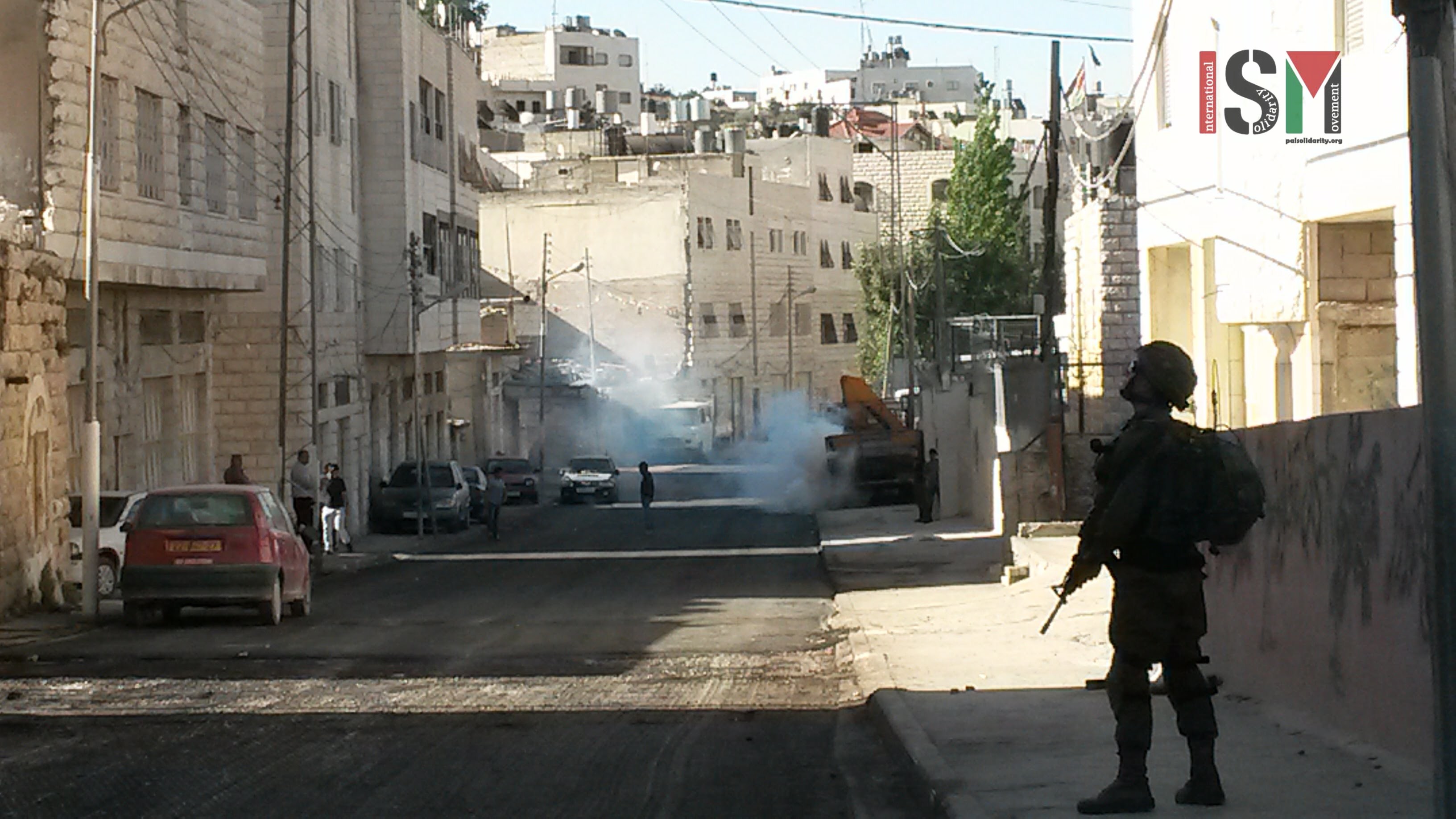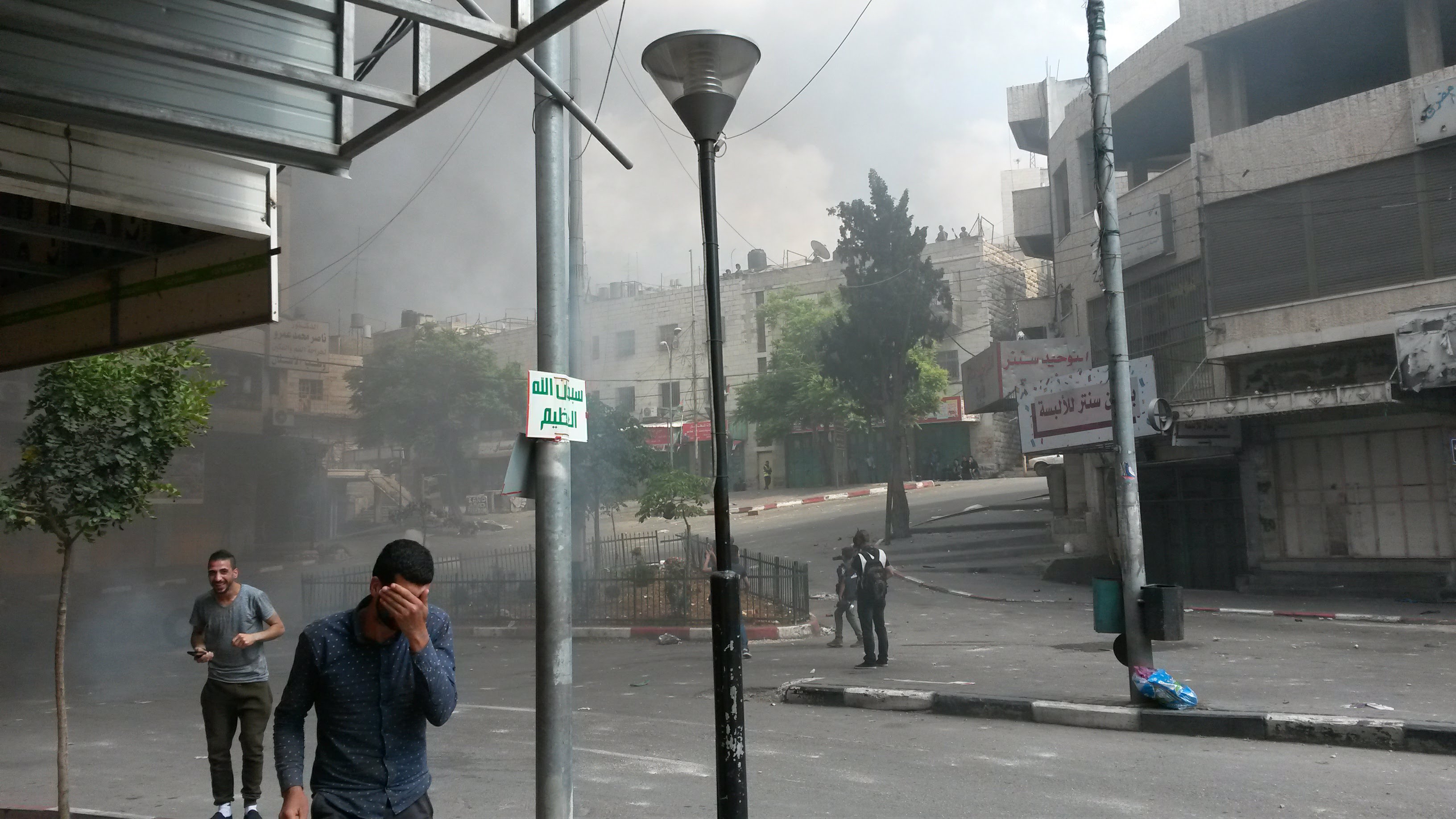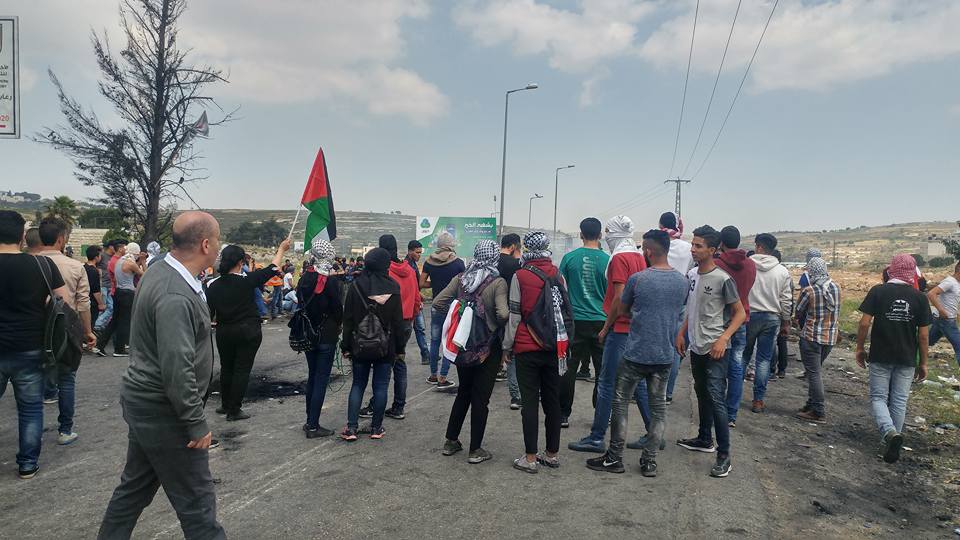Category: Features
-
Israeli soldiers fire tear gas and stun grenades into two schools in AlKhalil/Hebron on first day of Ramadan
On the morning of Thursday 17th May, the first morning of Ramadan, at around 7.30, several small boys were seen throwing stones at the Salaymeh checkpoint in the occupied H2 area of Al Khalil/Hebron. One soldier above the checkpoint responded by pointing a live ammunition rifle at a small boy. The soldiers on the checkpoint…
-
Israeli soldiers shoot 3 unarmed Palestinians in Al-Khalil/Hebron protest on Nakba day
On the morning of Tuesday 15th May, protesters in Al-Khalil/Hebron proceeded on two streets in the Bab-Azawiya area towards Checkpoint 56, where Israeli soldiers were occupying a rooftop inside the H1 (Palestinian controlled) area of the city. The protesters were driving cars with Palestinian flags, waving ‘Great Return March’ flags and some were throwing stones…
-
Many injured in Beit El protest on 15th May in commemoration of the Nakba
Palestinians marched from Arafat square in Ramallah at 11am this morning 15th May to the DCO checkpoint near the illegal settlement of Beit El to confront Israeli forces. At around 12PM there were over 1000 protestors. Israeli forces fired excessive amounts of rubber coated steel bullets, tear gas, sponge tipped batons and reportedly also used…



